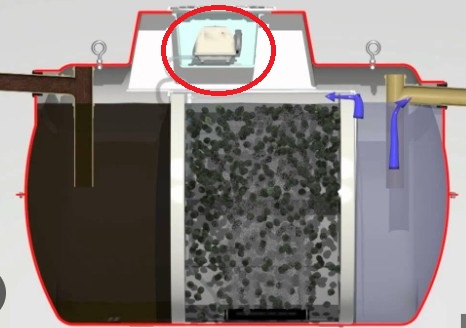Projects
Sewer connection, Golder's Green, London, Case Study
We were approached by a private customer, who had been referred to us by another private customer, to undertake both a foul and surface water connection for an existing property.

Objective
Our objective was to make two new connections onto the public sewer, both foul and surface water and connect to an existing property. The connections were made in the centre of the road, and pipes laid back to the boundary with private property. We connected the new pipework into the existing sewerage system within private property which included us making some alterations to the existing system.
In addition, we lifted an existing paved area and re-laid all the slabs.
About the project
Our customer already had a connection into a neighbouring property, but required two connections to be made into the public sewers in the Highway instead. This included both the foul and surface water sewers. The surface water sewer was in the centre of the road, at a couple of metres deep. The foul was closer to the pavement, but was in excess of 3m deep.
We facilitated to Section 106 to Thames Water, which included us putting together a basic drainage drawing, which detailed where the pipework was within the property, and also how we planned to connect to the two sewers and by which method. For the surface water we were able to fit a saddle connection and for the foul we had to fit a junction insertion.
If you need a sewer connection doing, please contact us as early as possible, there are many reasons why the lead-time for a sewer connection can be up to a year or more. For more information click here.
Our Section 50 application to Highways included some legal suspensions of parking spaces, in order that we could clear cars in advance of the work taking place. With the site set up on day one, we brought our own 3.7 tonne mini digger to site, complete with breaker.
As is the condition with a Section 50 Licence, we were obliged to source all drawings for utilities that might be present within the area to be excavated. We also sprayed up where we expected services to be, having done a CAT scan of the area.
We sawcut and broke out for the pit in the road, where we would make the two connections.
We were lucky to have very few services in the road and located both the foul and surface water sewers on day one. Over the next couple of days we carefully excavated around both sewers, breaking concrete away from the surface water sewer, as is of the case.

We sheeted the excavation as we went, using trench sheets, acrows and timbers.
We made the connections onto both sewers and these were inspected and passed by the Thames Water Inspector. We then proceeded to excavate further and to lay pipes towards the pavement.
In the pavement we encountered a lot more services, including a cast iron pipe which we think was a water main, also a couple of electric cables, BT ducts, a small BT cable which we were lucky to avoid, and also some fairly shallow Cable TV ducts. We had to hand dig around all of these services, after which we continued to lay pipework, for foul and surface water, into private property.
In private property we had to remove and reinstall the demarcation manhole for the foul, which included turning it to face the new direction out towards the Highway. From this new demarcation manhole we laid plastic 110mm pipework to connect up to the clay pipework we’d laid up to the boundary.


For the surface water we had to lay new 110mm plastic pipework from the downpipes on the house, to a new demarcation chamber that we installed, and from here will laid pipework up to that which we’d laid to the boundary in clay.
As part of the quote to our customer, we had included to lift and relay about 20 paving slabs which were uneven, creating a trip hazard. We re-laid these on a wet sand/cement bed, and pointed up around the two demarcation manholes.
With the excavations backfilled and compacted in the Highway, we reinstated with tarmac, and in the pavement we re-laid the large slabs that were there previously. The job took us 8 days from start to finish, including the work in private property. We finished by jet washing in private property and in the Highway, removing all signage and barriers from site, and taking our plant and machinery home for a well-earned rest!
Timeline
Time to quote for the works: Less than a week
Time taken to obtain Section 106 Licence from TW: 2 weeks
Time taken to obtain Section 50 Licence from Highways: 4 weeks – included talks between us and Highways regards traffic management, suspended parking bays, and we also had a site meeting with the representative from Highways
Leadtime to use S50 Licence: 6 weeks
Time taken to do the work: 8 days
Total time: 15 weeks
Do you need a sewer connection needs doing? Click here to enquire.
Don’t leave it too late for a sewer connection, most people do! Read our article here: How long does it take to do a sewer connection?
Click here to see more of our case studies.







































































































































































